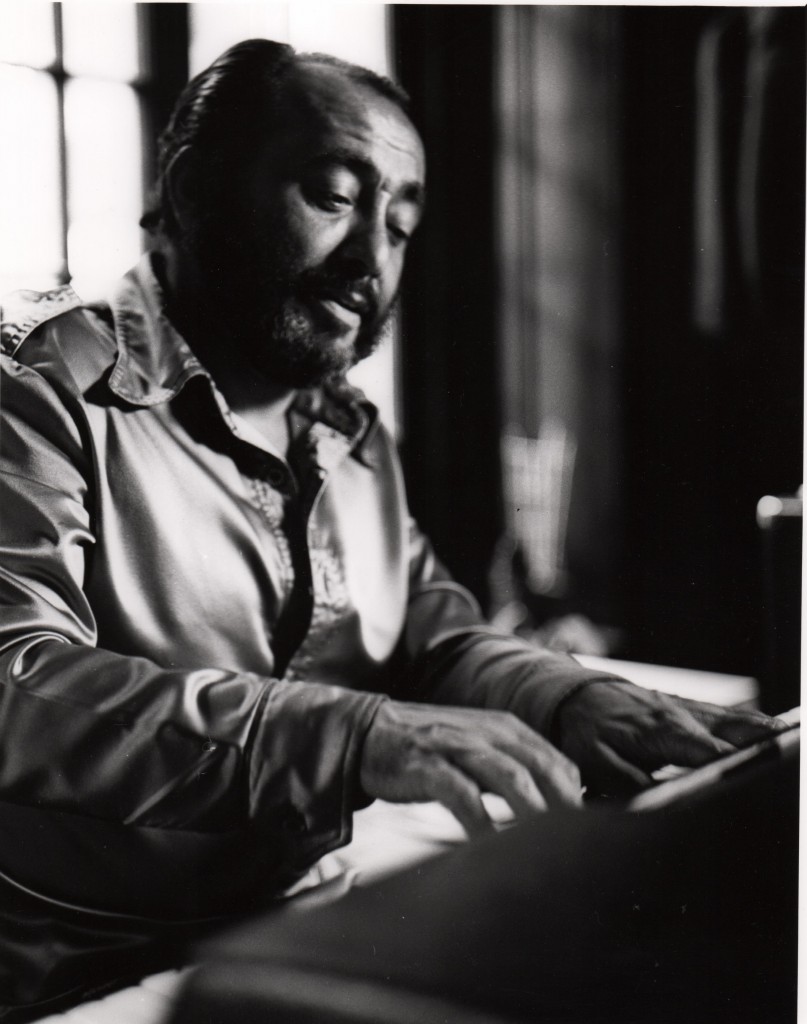For the longest time Chuck Stewart never knew he had a Latin Jazz or music collection. “I just took pictures of who showed up,” he said of the recording sessions and concerts record companies and organizations hired him to photograph. Stewart took pictures of iconic music, film, television, theater, and cultural celebrities: The Beatles on their first American tour. Frank Sinatra at Madison Square Garden. John Coltrane’s A Love Supreme recording session.
At the jazz and R&B/soul sessions and concerts, some of the people who showed up were Latino musicians and performers who joined African American and other contemporaries in creating the soundtrack of 20th century American culture with their spicy style and syncopated rhythms, staccato vocals, and arrangements that captured America’s diverse culture and musical sass.
In his more than 50-year career as an eyewitness to American cultural history, Stewart’s photos have appeared on some 2,000 album covers and liner notes for record labels like Cotique, Impulse, Atlantic, Decca, and Capitol, and have been used in exhibitions at scores of galleries, corporate events, and the Smithsonian Institution.
Perhaps pianist Jelly Morton, the French Creole musician and early composer of ragtime and jazz music explained the power of America’s cultural diversity best when he discussed the “Spanish Tinge” in jazz, America’s original musical art form, with Library of Congress curators. Born in Louisiana in 1890, Morton said the “right seasoning” for jazz comes from putting “tinges of Spanish in your tunes” his description of Afro-Latin rhythms.
Chuck Stewart’s Latin jazz and music collection includes portraits and spontaneous photos of Latino performers who became icons of American culture. For example:
Candido Camero, a Cuban-born jazz conguero still performing in his 90s.
Johnny Colon, Salsa musician.
La Lupe, Latin Soul Queen and Cuban vocalist born Guadalupe Victoria Yoli
Machito, who influenced Dizzy Gillespie, George Shearing, Charlie Parker and Stan Kenton, among others.
Eddie Palmeri, Grammy winning jazz pianist and bandleader.
Tito Puente, the Mambo king who thrilled audiences from Harlem dance halls ’s to Sesame Street.
Mongo Santamaria, Afro-Cuban jazz percussionist.
Dave Valetin, Latin jazz flutist. Known to combine Brazilian music and Latin with jazz.
Chano Pozo, Afro- Cuban Latin jazz percussionist, was very influential with the starting of latin jazz.
And many more.
Cotique Records hired Stewart to shoot many of its album covers and liner note photos. Fania, considered by some to be ”The Motown of Salsa” acquired Cotique in 1971. Their website says this about Cotique’s contributions to music.
Cotique Records “existed at the juncture where Afro-Caribbean music met the rootsy sounds of soul and r&b that blossomed in the United States during the ‘60s and ‘70s. Some of the finest albums in the boogaloo and Latin soul genres were recorded for this label, including sessions by Joe Bataan, Johnny Colon and Larry Harlow. Cotique’s product was marked by a refined aesthetic and unerring good taste – consider Machito’s foray into r&b idioms on the Soul of Machito LP.”
Chuck Stewart captured it all photographing everyone who just showed up.

